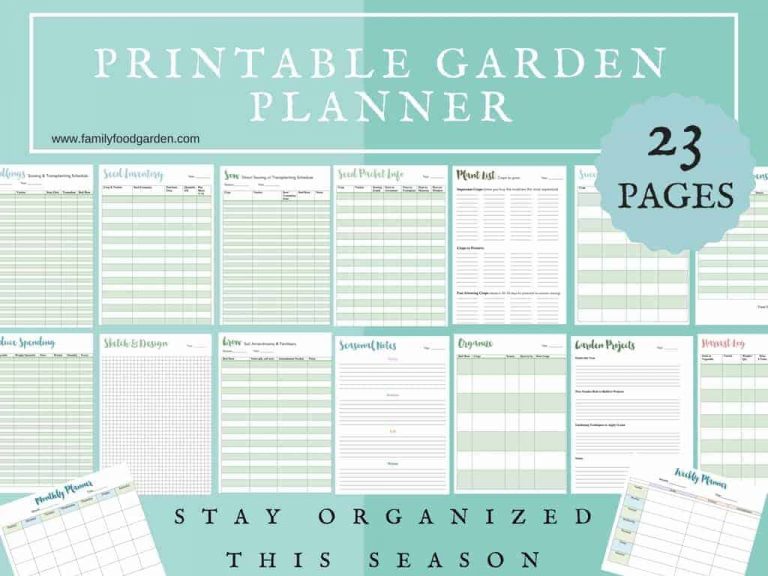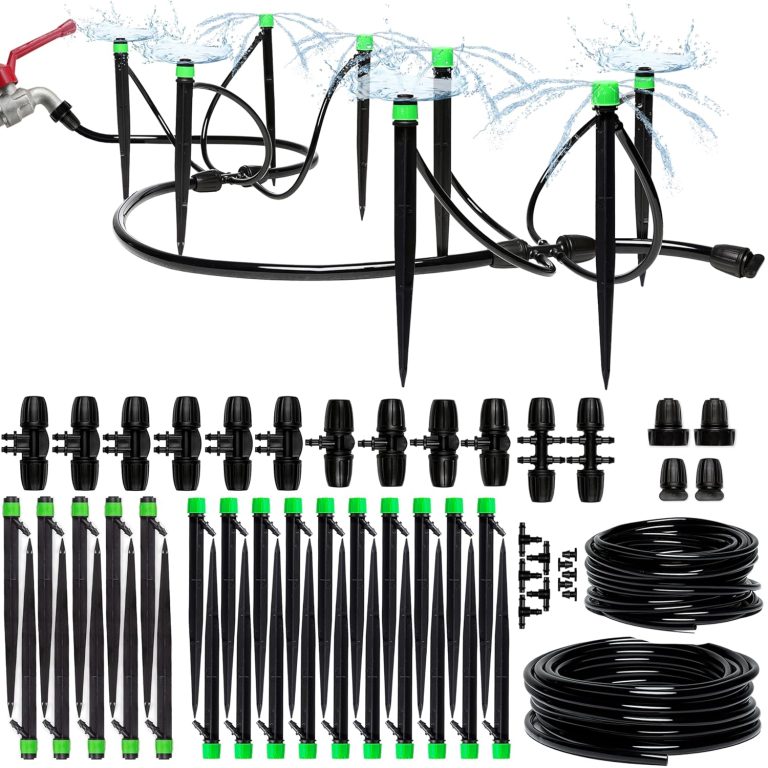The Difference Between Garden Soil and Topsoil
The basic difference between garden soil and topsoil is the content of organic matter. Garden soil is less expensive, contains more organic matter, and holds more air and water. It also contains micronutrients. In addition to that, garden soil is less dense and has a higher water-holding capacity than topsoil.
Learn more about the difference between garden soil and topsoil, as well as some of the benefits of each type.
Garden soil is rich in micronutrients.
Most plants require at least some amount of nitrogen to grow and develop. Nitrogen also helps build plant proteins. Phosphorus helps plants form seeds, grow roots and maintain moisture. Potassium improves the taste of many fruits and vegetables. Micronutrients are important for plant growth and development and are essential for optimal growth and health.
Consider ordering soil tests from a plant or garden supply store to determine your plants’ needs.
Soil texture can be defined by the size of the inorganic soil particles. This texture will determine its drainage and nutrient availability. The proportion of silt, clay and sand particles in your soil determines its texture. It should be able to retain about one inch of organic matter annually and be smooth, grittier, or rockier than sandy soil.
A garden soil rich in clay tends to be sticky, rubbery or harsh in texture.
Wood ashes are excellent magnesium, phosphorus, aluminum, and sodium source. They can also help raise your soil’s pH. Another great way to add more magnesium to your soil is to add Epsom salt. The wood ashes will add minerals like potassium to your soil while increasing its aeration capacity. It will help your plants absorb other key nutrients in the soil. If you plan a new garden, add Epsom salt to the soil to provide a balanced dose of these vital nutrients.
- NATURAL AND ORGANIC NUTRIENT RICH FERTILIZER: We’re on a mission to get America growing again and it all starts with what’s right beneath us — your soil; Grow a bountiful garden in your home with the Back to the Roots All-Purpose Peat-Free Potting Mix, packed with the nutrients needed for your succulents, plants, flowers, and vegetables to thrive
- ROOT BOOSTING AND MOISTURE RETAINING MYCORRHIZAE, YUCCA EXTRACT, AND COCONUT COIR: This organic potting soil has mycorrhizae, coconut coir, and yucca extract which enhances the plant’s and root’s uptake of water and nutrients required for growth; You’re bound to have a thriving indoor and outdoor garden in no time
- INCLUDES pH BALANCING DOLOMITIC LIMESTONE: The dolomitic limestone of this all-purpose potting soil has a combination of calcium carbonate and magnesium carbonate which effectively neutralizes acidity and prevent nutrient deficiency
- GREAT FOR YOUR PLANTS AND THE PLANET: The Back to the Roots All-Purpose Potting Mix is the 1st premium, 100% peat-free soil in the market; Mined peatlands contribute yearly CO2 emissions equivalent to what cars all over the world are releasing — that’s why we think it’s so important to leave peat alone
- ZERO-RISK GARDENING: Made in the USA and 100% Guaranteed to grow; All of our soils come with 100% satisfaction guarantee – if you have any problems, we will send you a new bag to get you growing
Last update on 2025-11-15 / Affiliate links / Images from Amazon Product Advertising API
It is less expensive than topsoil.
You may have heard about Garden soil and Topsoil, but are they the same? While Topsoil is a more expensive product, Garden soil is less expensive. Generally speaking, Garden soil is better for gardening. It contains more nutrients and has a higher organic matter content. Compared to Topsoil, Garden soil is a better choice for gardening. However, it does not have the same benefits as Topsoil.
Topsoil is the topmost layer of soil. It is comprised of minerals, air, and organic matter. Organic matter is essential to the soil’s structure and is ideal for plant growth. Topsoil is also more expensive, and it may cost $12 to $50 per cubic yard. However, this soil is more easily cultivable, has higher biological activity, and is more resistant to compaction.
Cost: The cost of topsoil and garden soil differ by density. Black dirt costs less per cubic yard and screened topsoil is about $20 a cubic yard. Super loam, a 50-50 mix of topsoil and compost, costs $25 to $35 per cubic yard. Depending on where you live, this can range from $1 to $30 a cubic yard.
It contains more organic matter.
Organic matter is the component of soil that binds together minerals and other ingredients. It also provides binding sites for nutrients, allowing plants to absorb and release them into the soil. Organic matter is called humus, soil improver, and soil conditioner. Many gardeners wonder how to use organic matter in their soil. The following article discusses how to use organic matter effectively. Read on to find out why more organic matter in your soil benefits your garden and what organic material you should look for.
Garden soil should contain between 30 and 40% of organic matter. Healthy soil will support the growth of healthy plants even at a lower level of organic matter. This is because of the carbon cycle. The natural soil contains thirty to forty percent more organic matter than it does now. A fall in soil organic matter by 0.5% can reduce the nutrient-holding capacity of the soil by up to 4%. However, healthy soil contains between 50 and 75 percent of organic matter, and a good amount can be found in a garden.
Adding organic matter to the soil will help the plant roots absorb nutrients. It will also increase the soil’s cation-exchange capacity, attracting positively charged cation particles into the soil. Organic matter also improves the structure of the soil. Ultimately, it will help your garden plants thrive. By adding organic matter, you’ll have more healthy, vibrant plants and a soil that can fight soil diseases.
It holds more air and water.
A healthy garden needs healthy soil. Depending on your climate and locality, clay-based soil holds more water and nutrients. Sandy soil is more aerated and holds more air. If your soil type is less ideal, there are some things you can do to improve it. Use fertilizers and compost to add more nutrients and organic material, and try to drain waterlogged soil to improve its quality.
You can also add lime to acidic soils to return to a more alkaline state.
Loamy soil is one of the best soil types for most plants. It is made up of a mixture of three types of particles in fairly equal proportions. Most garden plants thrive in this type of soil because it holds plenty of moisture while allowing plenty of air to reach the roots. If you are unsure which soil to choose for your garden, read up on the different types.
It contains more sulfate.
Sulfur is a naturally occurring element in the air, hot springs, decaying organic matter, and some soils. It is a vital mineral for all living things, including plants, and is necessary for the growth and production of proteins, enzymes, and amino acids. Sulfur is one of the most common forms of sulfur in the soil and can be used as a fertilizer in gardens.
The main problem with sulfur in garden soil is its ability to affect plant growth. Plants need a certain amount of sulfur to grow properly. Sulfur is broken down into smaller elements easily decomposed by the microbial population. Although the sulfate form of sulfur is not harmful to microbes, it can be problematic in high concentrations. Therefore, proper amounts of sulfur in the soil are necessary to grow all plants.
If the levels of sulfur in your soil are too high, you can use sulfate fertilizers to correct this problem. You can buy ammonium sulfate, potassium sulfate, magnesium sulfate, gypsum, and superphosphate. You can also use elemental sulfur, but it is important to remember that sulfate-based fertilizers are the best garden choices.
It is corrosive
Soil corrosivity can be a serious issue for gardening. The high moisture content and volume of salts in garden soil cause this corrosive quality. If left on top of a driveway or covered, it will damage the surface over time. To ensure the durability of soil, you should dig shallow holes. This will ensure that the salts will have a chance to seep into the soil.
Soil corrosiveness is affected by several factors, including the total soluble salt content, moisture content, pH value, organic matter, temperature, and tightness. In general, soil corrosivity is measured according to a comprehensive evaluation method. You can determine if your garden soil is corrosive by checking its resistivity grade. The resistivity of the soil is a factor of the slope and is the basis for soil grading.
If you plan to grow food in your garden, you should avoid planting vegetables in corrosive soil. Sometimes, pressure-treated lumber with CCA can be used in food gardens. In these cases, it is possible to get arsenic, copper, and chromium into the soil over time. These metals can eventually be carried into food crops grown nearby. You can mitigate this problem by following certain guidelines and applying protective coatings on the pipes and garden soil.
It is not compost
Most people mistake compost for garden soil. While compost is an important ingredient in the soil, it is not a fertilizer. The right combination of soil and compost will give your plants the necessary nutrients to grow and thrive. Moreover, compost can help protect soil organisms in the fall and winter. Soil is the base for life on earth. However, some important things to remember when comparing compost to garden soil.
The topsoil in your garden is the richest source of nutrients for plants. It also contains organic matter, but not nearly as much as is needed. As such, a higher percentage of compost is needed for growing plants. While typical topsoil may have some organic matter, it is largely composed of local dirt, small rocks, and woody debris. Moreover, the composition is not always suitable for growing plants.
Soil texture varies from very fine particles to coarse gravelly ones. To determine the texture of your soil, feel it between your fingers. Sandy soil has fine particles, while silty soil is smooth. It isn’t the best choice if you feel a lot of friction while rubbing the soil. Clay soil feels rough and sticky when dry, but it can also be rubbery. If you can’t identify the type of soil, use compost.








